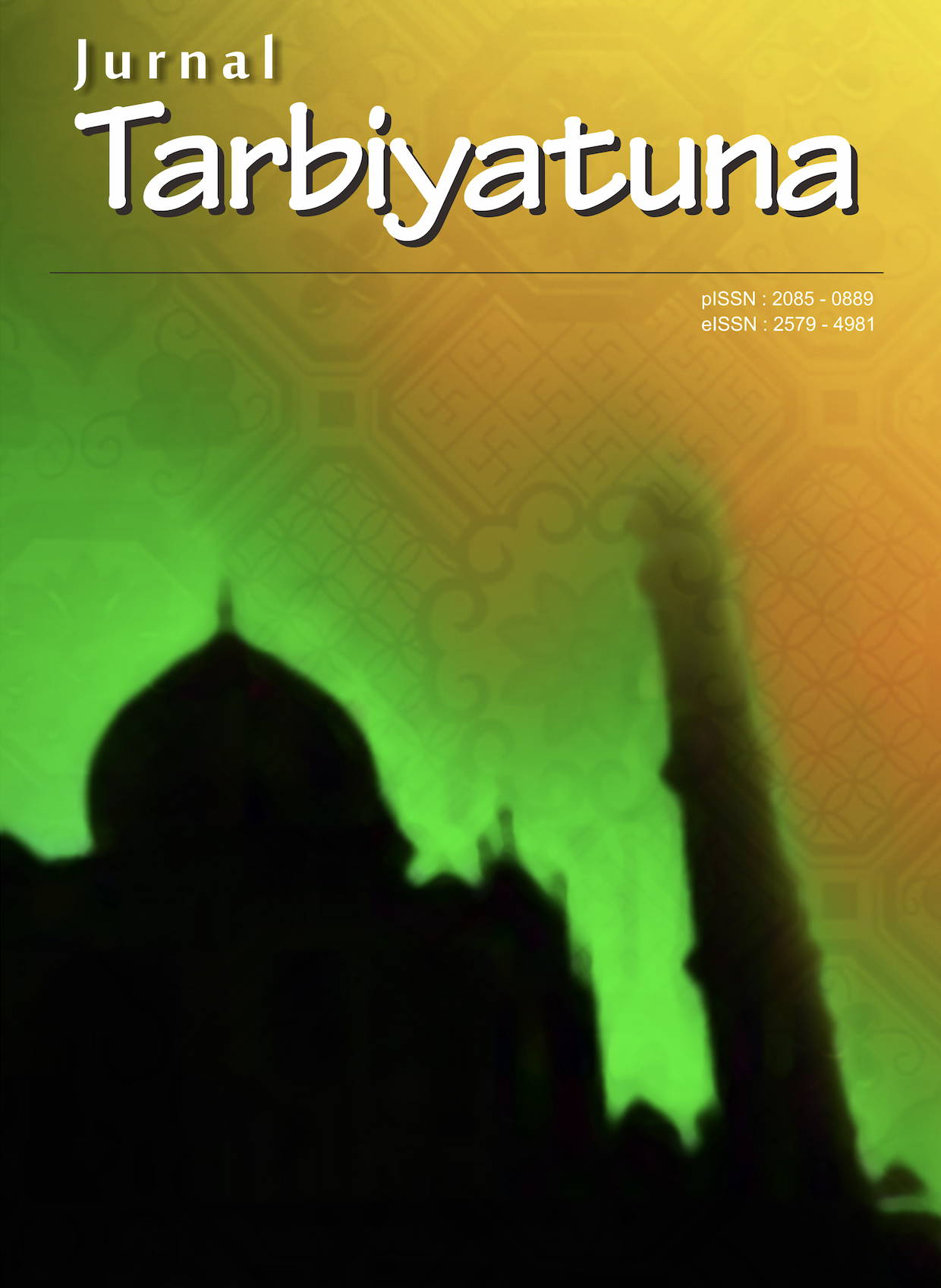Main Article Content
Abstract
The concept of Islamic education requires more than just a theoretical understanding. It concentrates only on Islamic studies because of the difficulties in using a chemical perspective to understand the concepts. Therefore, this study aims to implement an Islamic education concept in ethnochemistry using Sasak traditional wisdom. It uses qualitative methodologies such as observation, in-depth interviews, documentation, and curriculum analysis to obtain data. The results show that ethnochemistry based on the local wisdom of the Sasak tribe has a strong relationship with the Islamic education concept, especially in the merarik (marriage) ceremony. A fundamental part of Islamic education is a belief in the need for mutual respect, cooperation, open debate, and consensus, reciprocal give and take, collaboration, and the necessity for stability. These ideas are also very relevant to the chemical bond theory, which includes concepts such as electron stability, electron configuration, positive and negative ion formation, as well as chemical bond formation. Therefore, ethnochemistry based on Sasak local wisdom can be considered relevant to the Islamic education concept. Acknowledging intellectually and ethically intelligent students is essential to achieving national education goals.
Keywords
Article Details

This work is licensed under a Creative Commons Attribution-NonCommercial 4.0 International License.
References
- Achamad, H. dan T. (2001). Struktur Atom, Struktur Molekul, dan Sistem Periodik. PT. Citra Aditya Bakti.
- Ainiyah, Nur. (2013). Pembentukan karakter melalui pendidikan agama islam. Jurnal Al-Ulum.
- Budiwanti, E. (2000). Islam Sasak. LKIS Yogyakarta.
- Chang Raymond. (2004). Kimia Dasar. Erlangga.
- Chanifudin & Nuriyati, T. (2020). Integrasi Sains dan Islam dalam Pembelajaran. Istija Jurnal Pendidikan, 1(2), 212-229.
- Creswell, J. W. (2014). Proceedings of the Annual Conference of the International Speech Communication Association, INTERSPEECH. Proceedings of the Annual Conference of the International Speech Communication Association, INTERSPEECH.
- Djaelani, S. (2013). Peran Pendidikan Agama Islam Dalam Keluarga dan Masyarakat. 1.
- Fadli, A. (2018). Chemical Bonding and Local Islamic Wisdom of Sasak Tribe, Lombok, West Nusa Tenggara. IBDA` : Jurnal Kajian Islam dan Budaya, 16(1), 53–67. https://doi.org/10.24090/ibda.v16i1.1389
- Fadli, A., & Irwanto. (2020). The effect of local wisdom-based ELSII learning model on the problem solving and communication skills of pre-service islamic teachers. International Journal of Instruction, 13(1), 731–746. https://doi.org/10.29333/iji.2020.13
- Fadli, A., & Mataram, U. I. N. (n.d.). Konsep Pendidikan Imam Al-Ghazali dan Relevansinya Dalam Sistem Pendidikan Di Indonesia.
- Morgong, S. (1988). Dasar-Dasar Kimia Organik. P2LPTK.
- Musrifah. (2016). Pendidikan Karakter dalam Perspektif Islam. Edukasi Islamika, vol. 1, 119–133.
- Prasetiawan, W. (2009). Kimia Dasar 1. Cerdas Pustaka.
- Rasmuin. (2019). Konsep dan Implementasi Pendidikan Akhlak Pesantren Modern: Studi pada Pondok Pesantren Modern Miftahunnajah Sleman. Tarbiyatuna, 10(1), 32–42
- Rosa, M., & Clark, D. (2011). Ethnomathematics: the cultural aspects of mathematics. Revista Latinoamericana de Etnomatemática: Perspectivas Socioculturales de la Educación Matemática, 4(2), 32–54.
- Subur. (2016). Peran Pendidikan Islam dalam Perkembangan Jiwa Remaja. Tarbiyatuna, 7(2), 167–185.
- Singh, I. Sen, & Chibuye, B. (2016). Effect of ethnochemistry practices on secondary school students’ attitude towards chemistry. Journal of Education and Practice, 7(17), 44–56.
- Sumardi, L., Rohman, A., & Wahyudiati, D. (2020). Does the teaching and learning process in primary schools correspond to the characteristics of the 21st century learning? International Journal of Instruction, 13(3), 357–370. https://doi.org/10.29333/iji.2020.13325a
- Sumardi, L., & Wahyudiati, D. (2021). Using Local Wisdom to Foster Community Resilience During the Covid-19 Pandemic: A Study in the Sasak Community, Indonesia. Proceedings of the 2nd Annual Conference on Education and Social Science (ACCESS 2020), 556(Access 2020), 122–127. https://doi.org/10.2991/assehr.k.210525.059
- Sungkharat, U., Doungchan, P., Tongchiou, C., & Tinpang-nga, B. (2010). Local Wisdom: The Development Of Community Culture And Production Processes In Thailand. International Business & Economics Research Journal (IBER), 9(11), 115–120. https://doi.org/10.19030/iber.v9i11.37
- Suprapto. (2017). Sasak muslims and interreligious harmony: Ethnographic study of the perang topat festival in Lombok - Indonesia. Journal of Indonesian Islam, 11(1), 77–98. https://doi.org/10.15642/JIIS.2017.11.1.77-98
- Sutrisno, H., Wahyudiati, D., & Louise, I. S. Y. (2020). Ethnochemistry in the Chemistry Curriculum in Higher Education: Exploring Chemistry Learning Resources in Sasak Local Wisdom. Universal Journal of Educational Research, 8(12A), 7833–7842. https://doi.org/10.13189/ujer.2020.082572
- Villafañe, S. M., & Lewis, J. E. (2016). Exploring a measure of science attitude for different groups of students enrolled in introductory college chemistry. Chemistry Education Research and Practice, 17(4), 731–742. https://doi.org/10.1039/c5rp00185d
- Wahyudiati, D. (2016). Analisis Efektivitas Kegiatan Praktikum Sebagai Upaya Peningkatan Hasil Belajar Mahasiswa. Jurnal Tatsqif, 14(2), 143–168. https://doi.org/10.20414/jtq.v14i2.27
- Wahyudiati, D. (2021a). Investigating Problem Solving Skills and Chemistry Learning Experiences of Higher Education Base on Gender and Grade Level Differences. Journal of Science and Science Education, 2(2), 62–67. https://doi.org/10.29303/jossed.v2i2.632
- Wahyudiati, D. (2021b). Eksplorasi Sikap Ilmiah dan Pengalaman Belajar Calon Guru Kimia Berdasarkan Gender. SPIN. 3(1), 45–53. https://doi.org/10.20414/spin.v3i1.3333
- Wahyudiati, D., Sutrisno, H., & Supiah, I. (2019). Self-Efficacy And Attitudes Toward Chemistry Of Pre-Service Chemistry Teachers: Gender And Grades Level Perspective. International Journal Of Scientific & Technology Research, 8(09).
